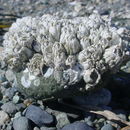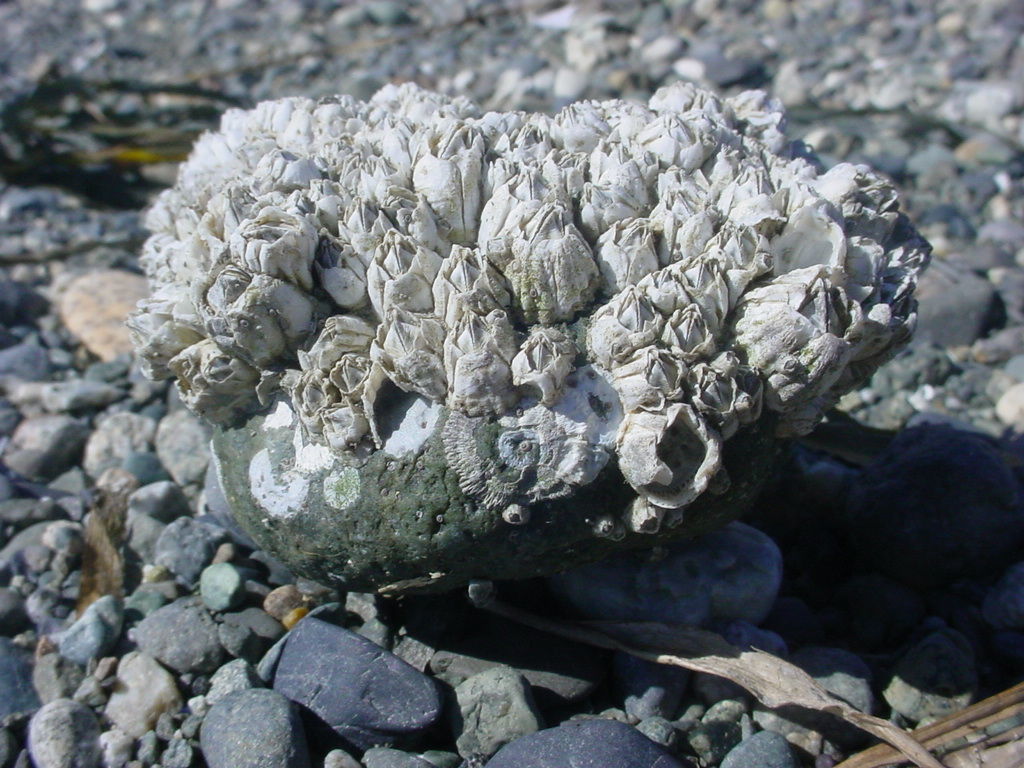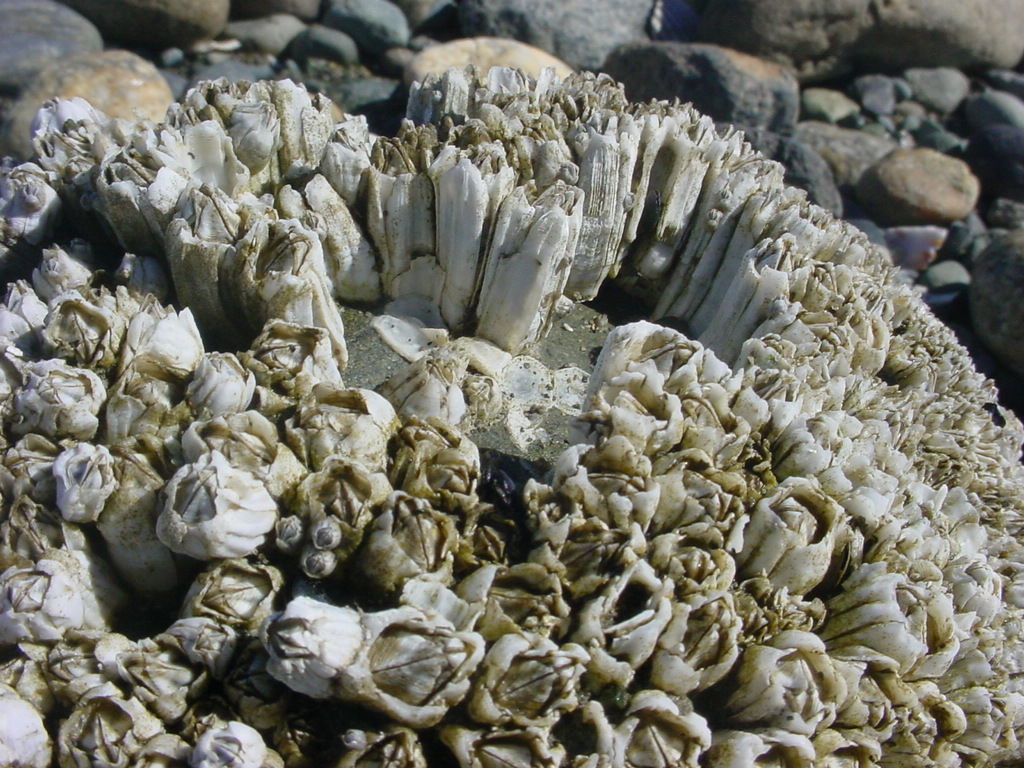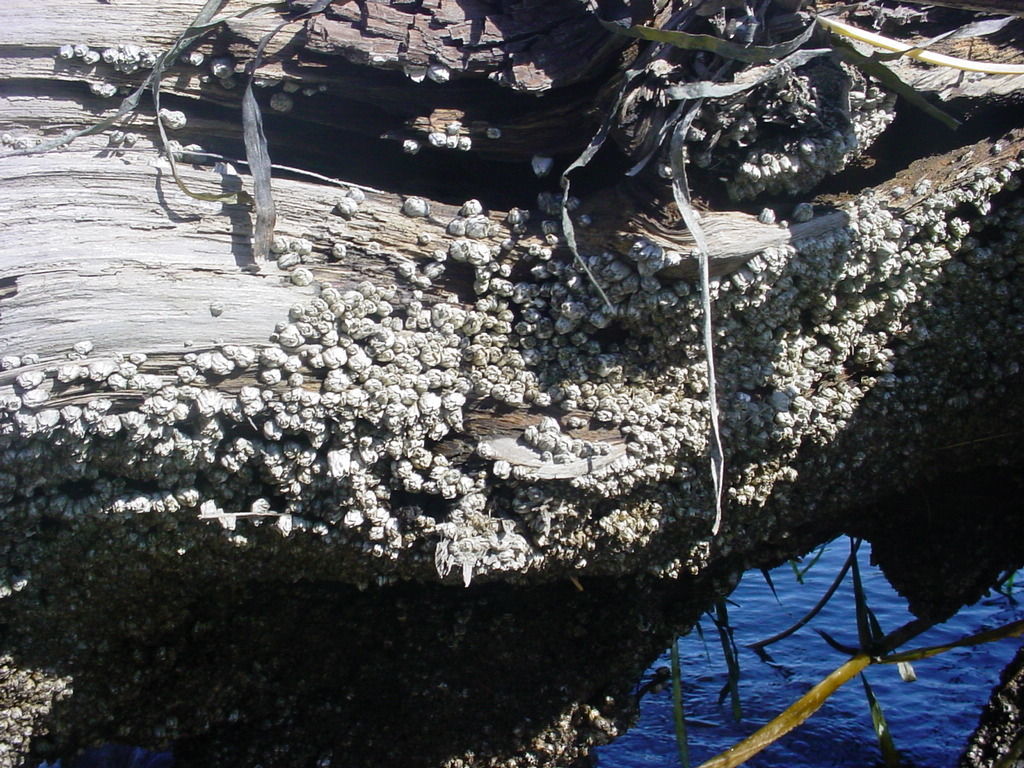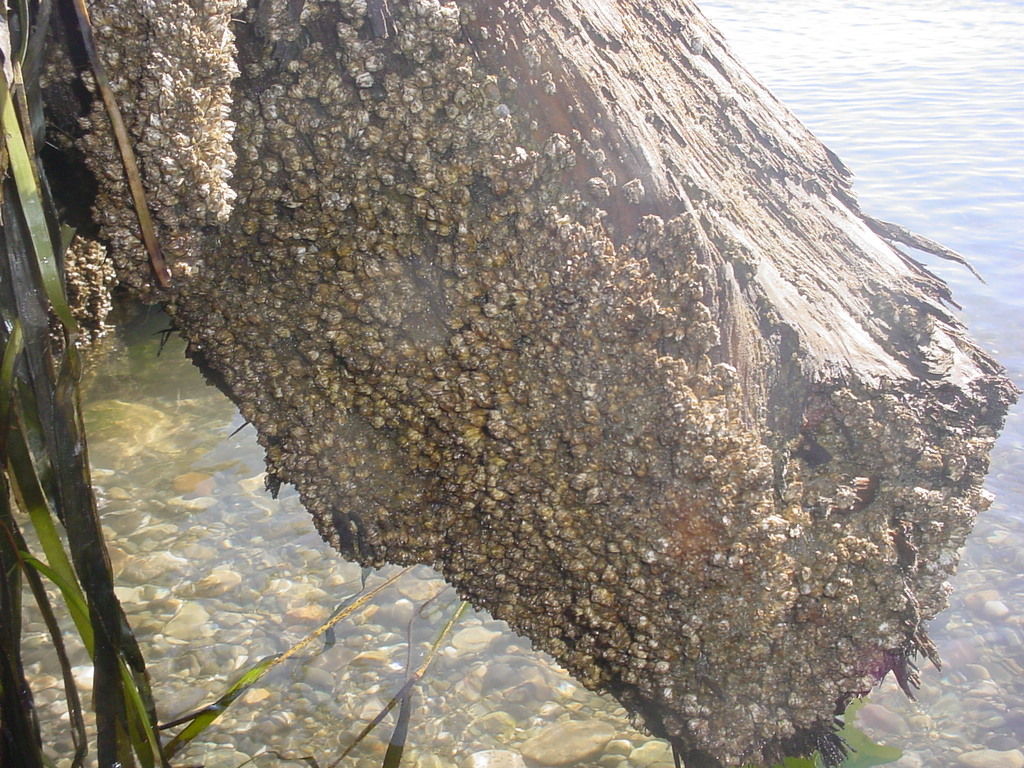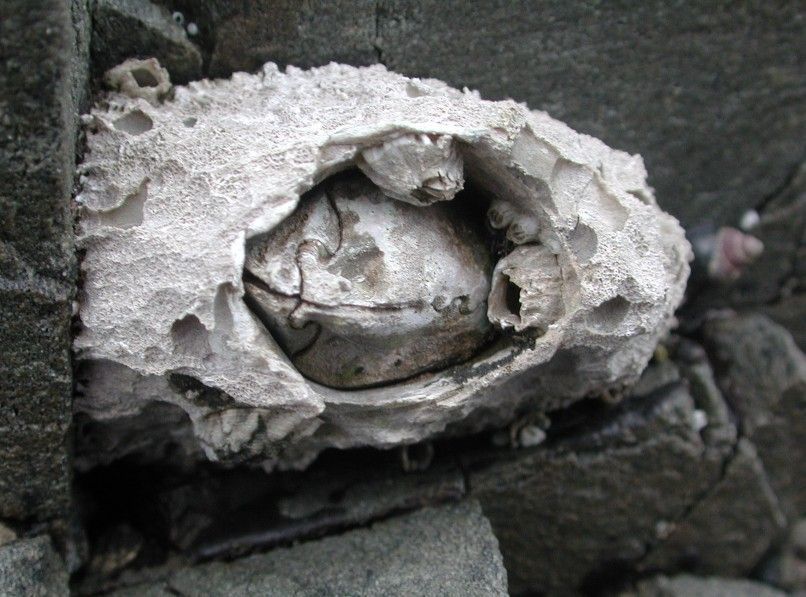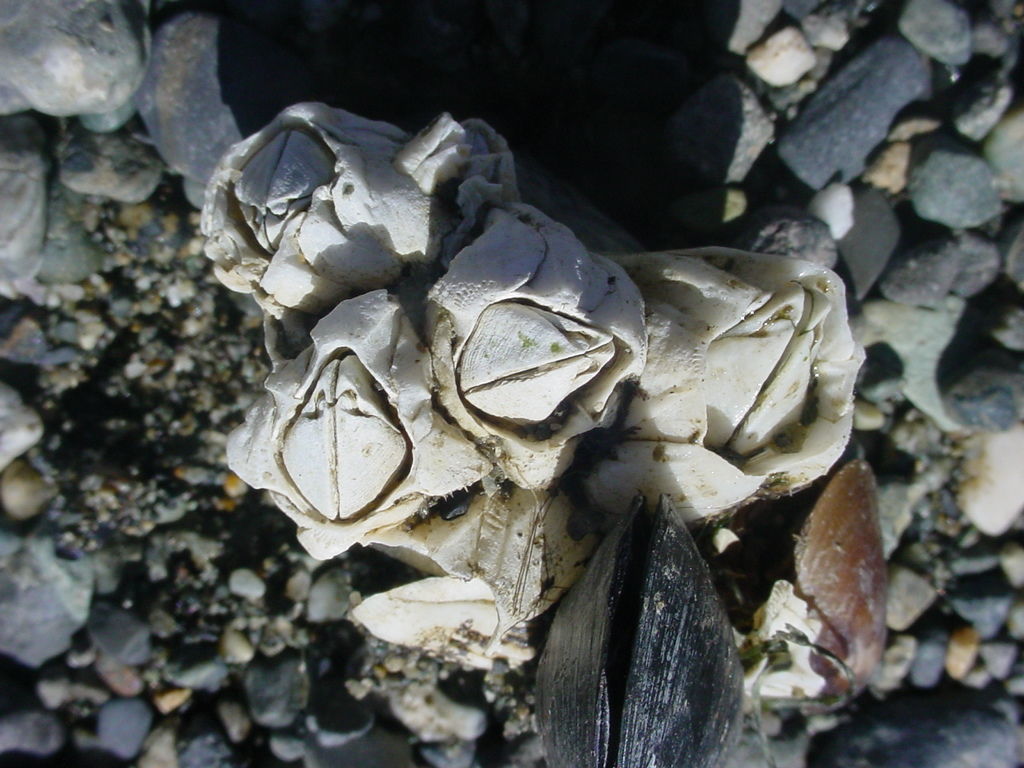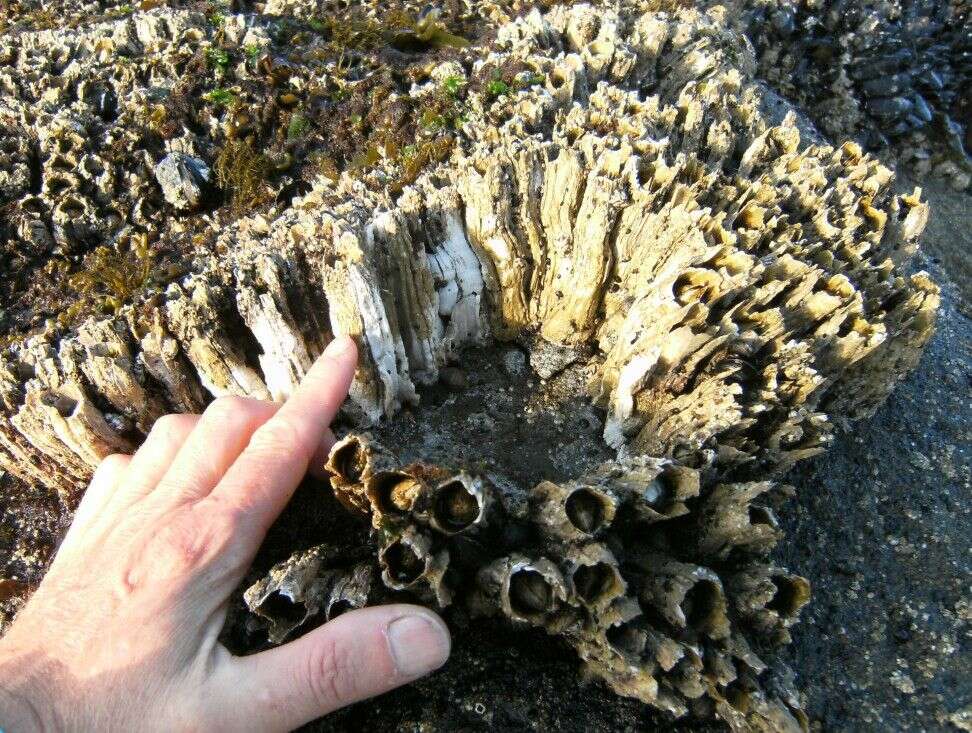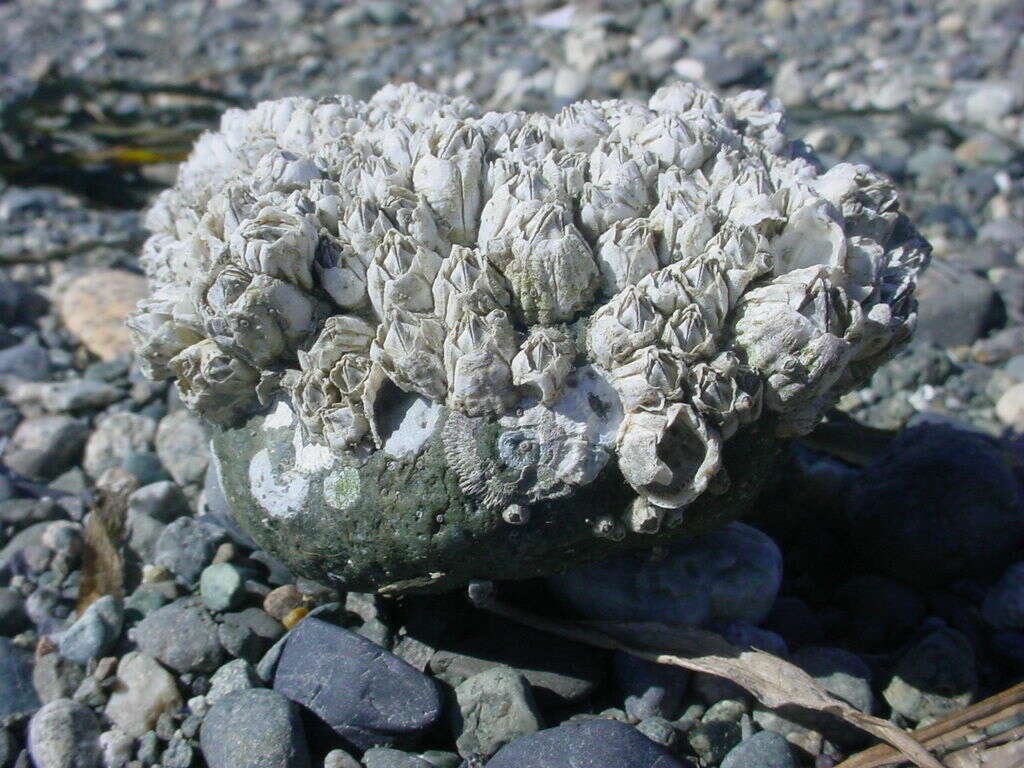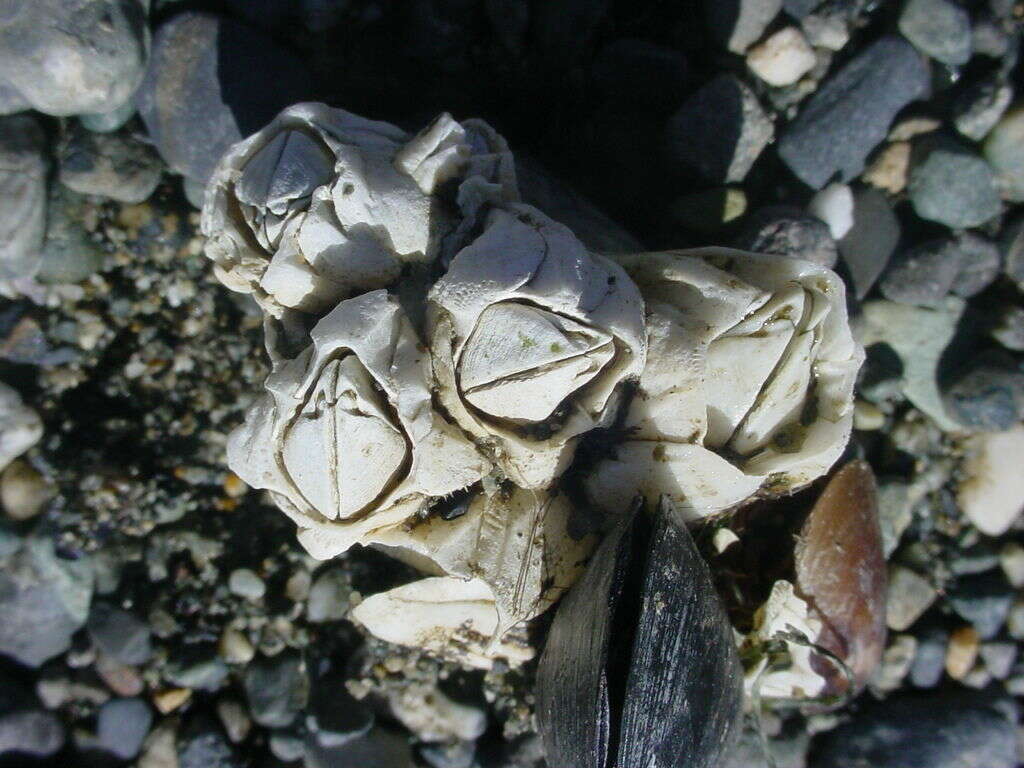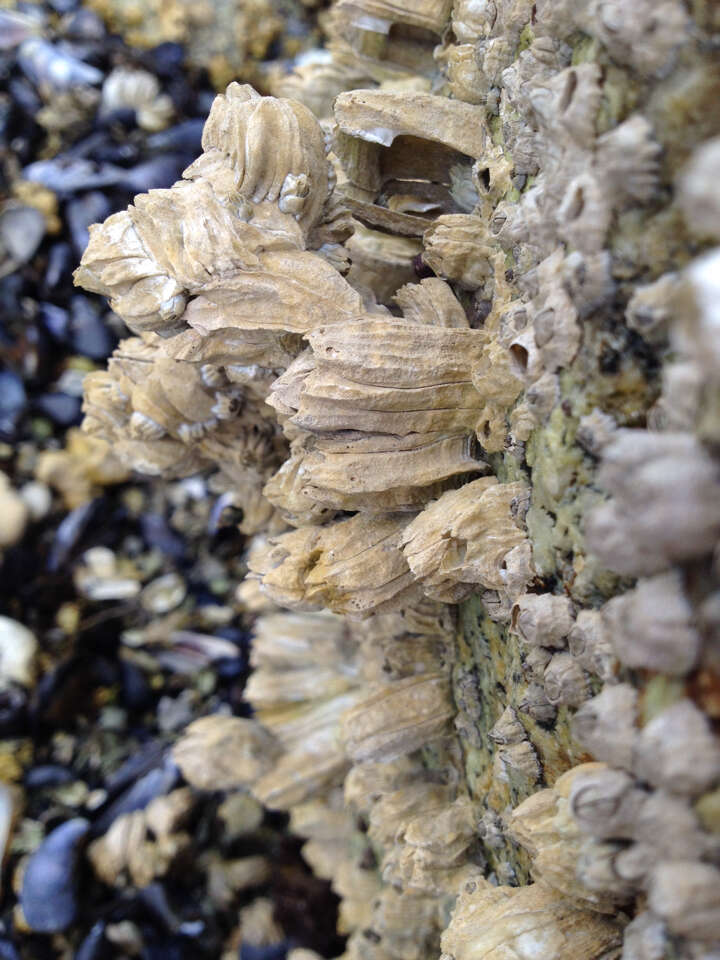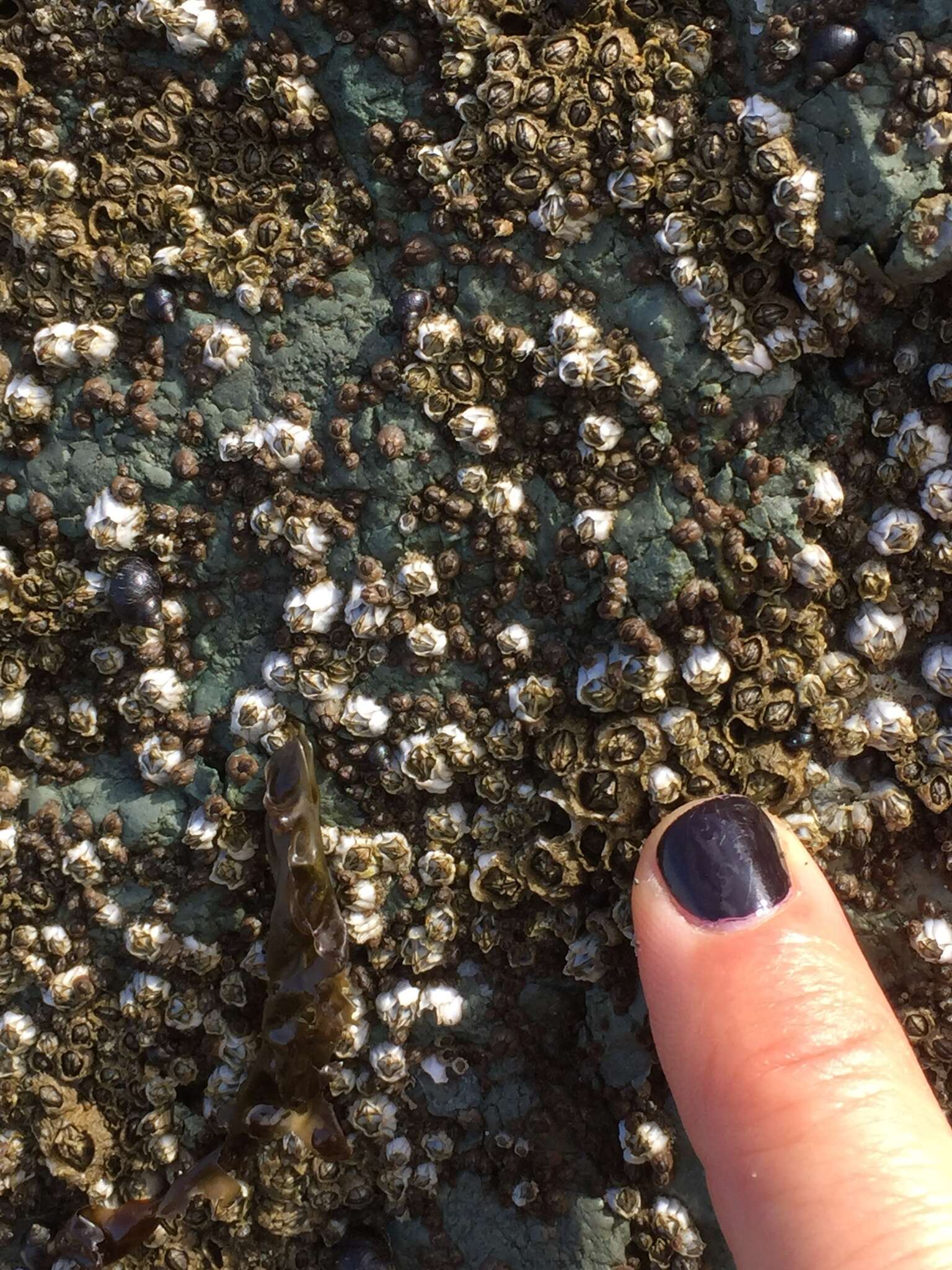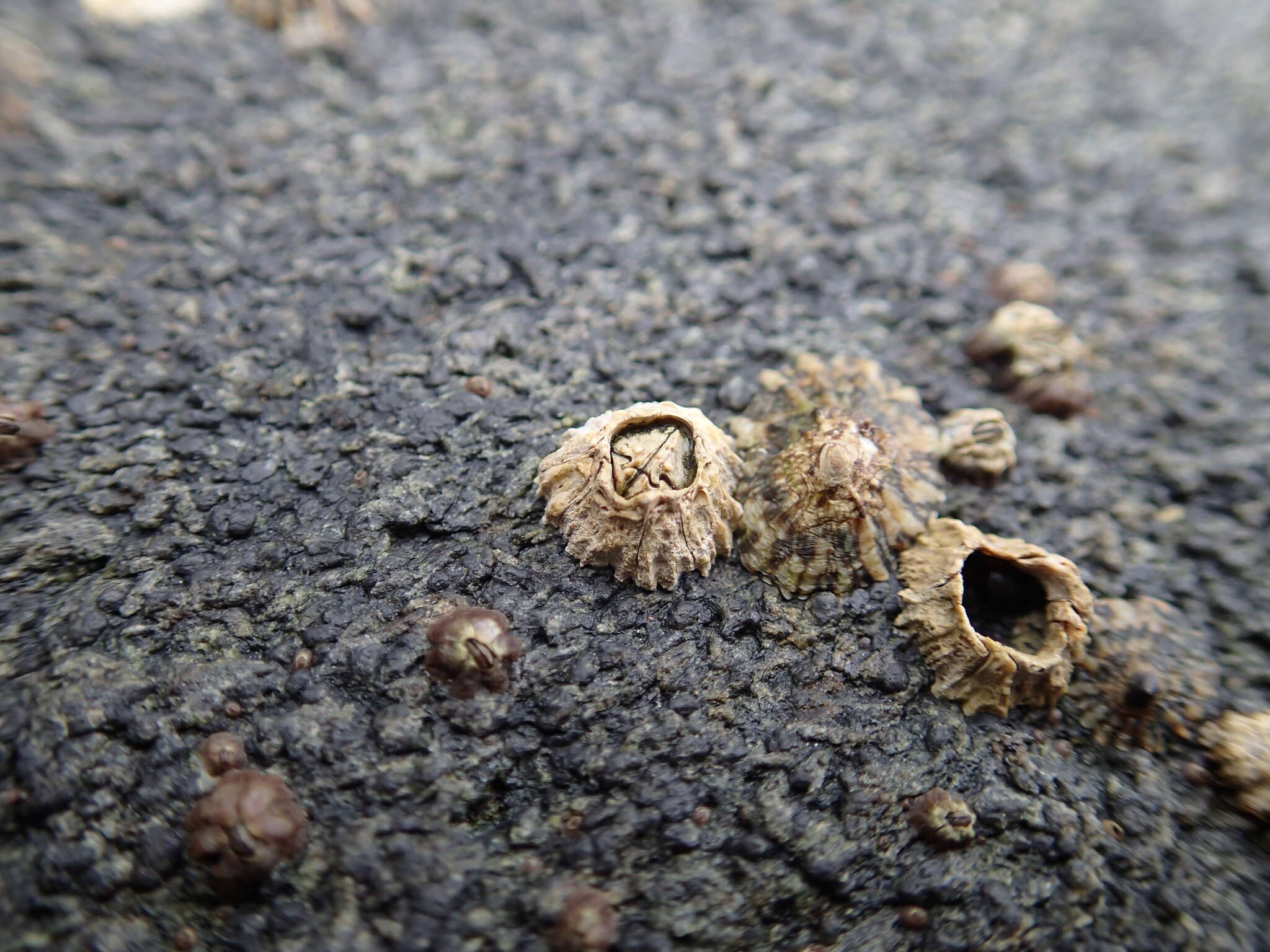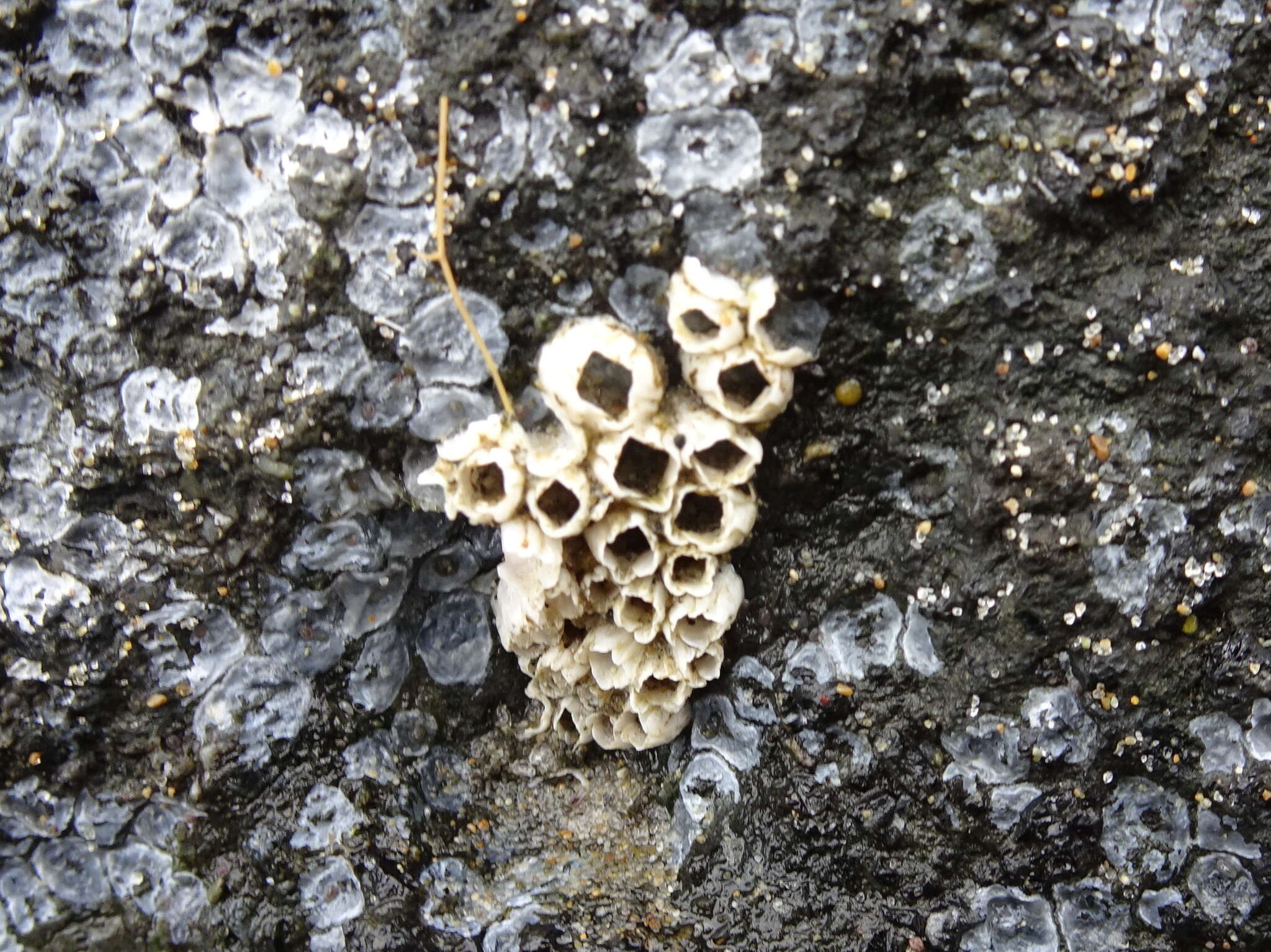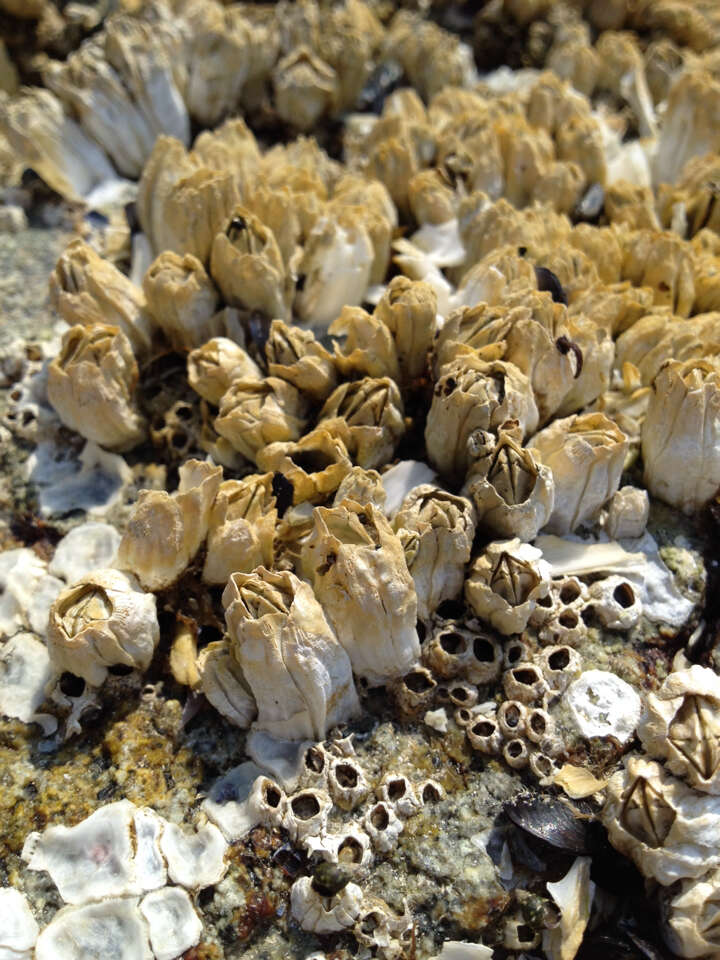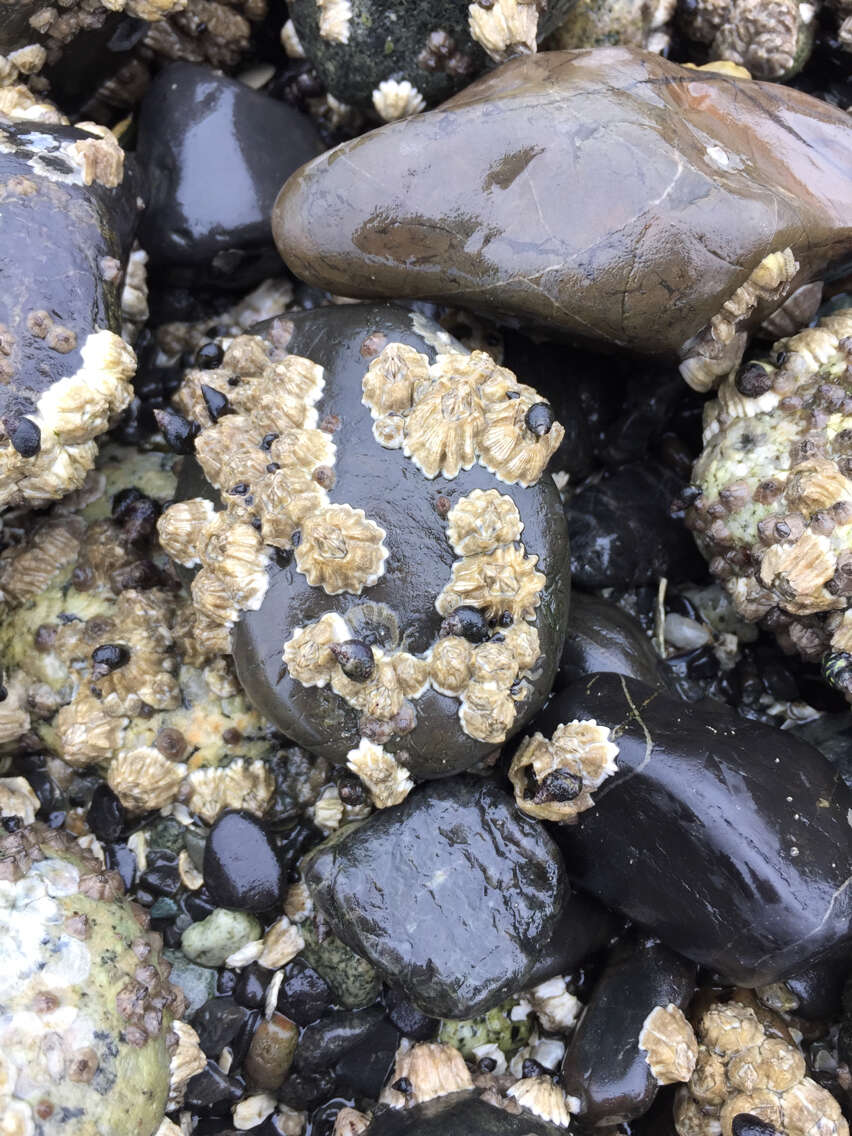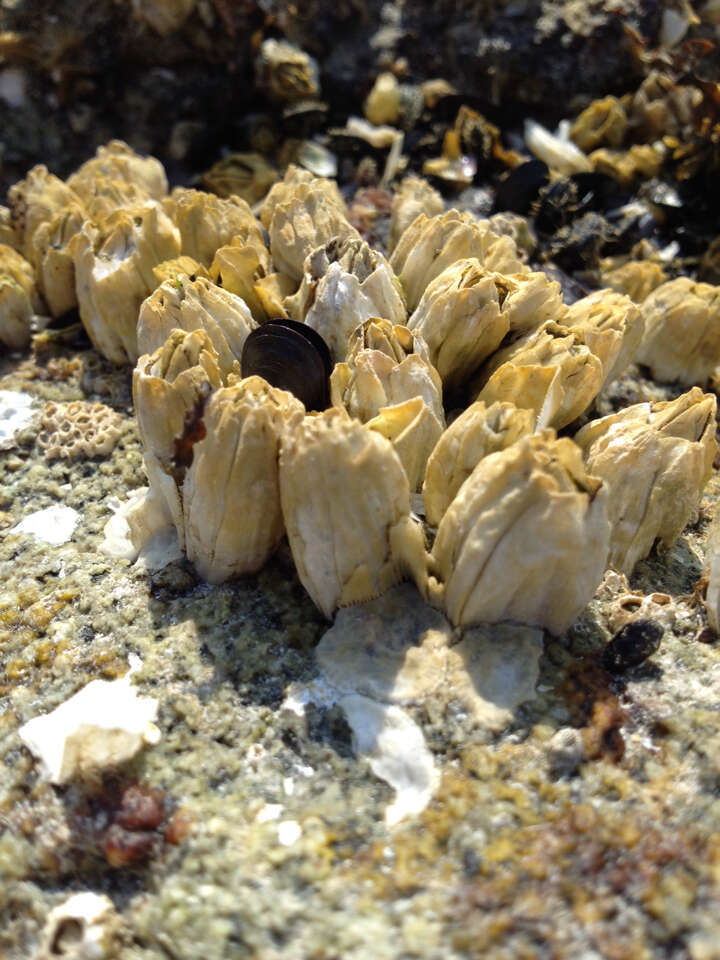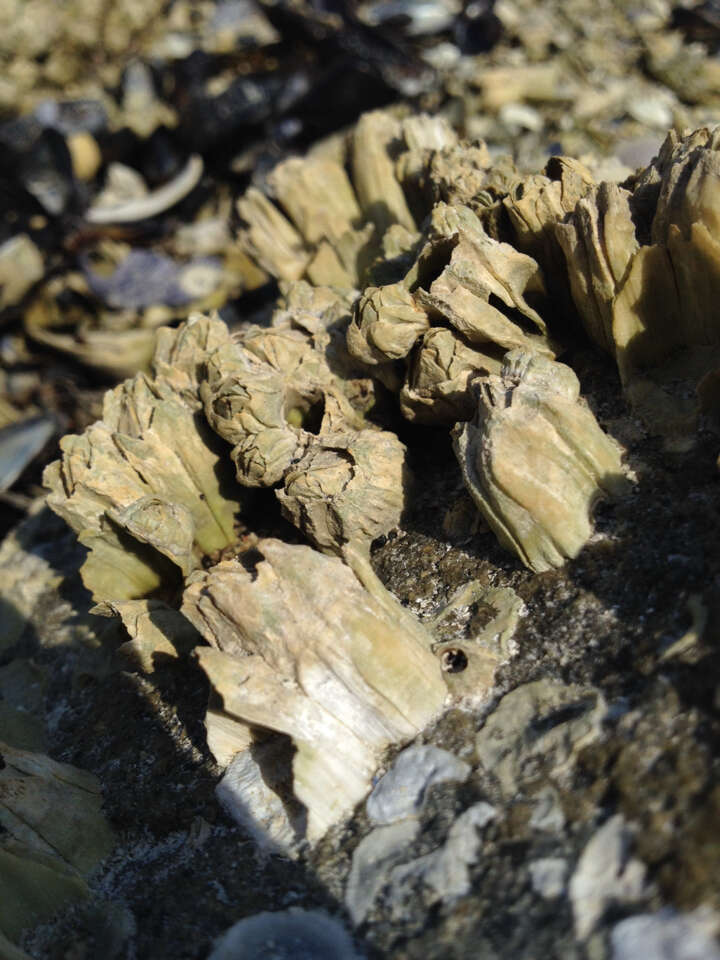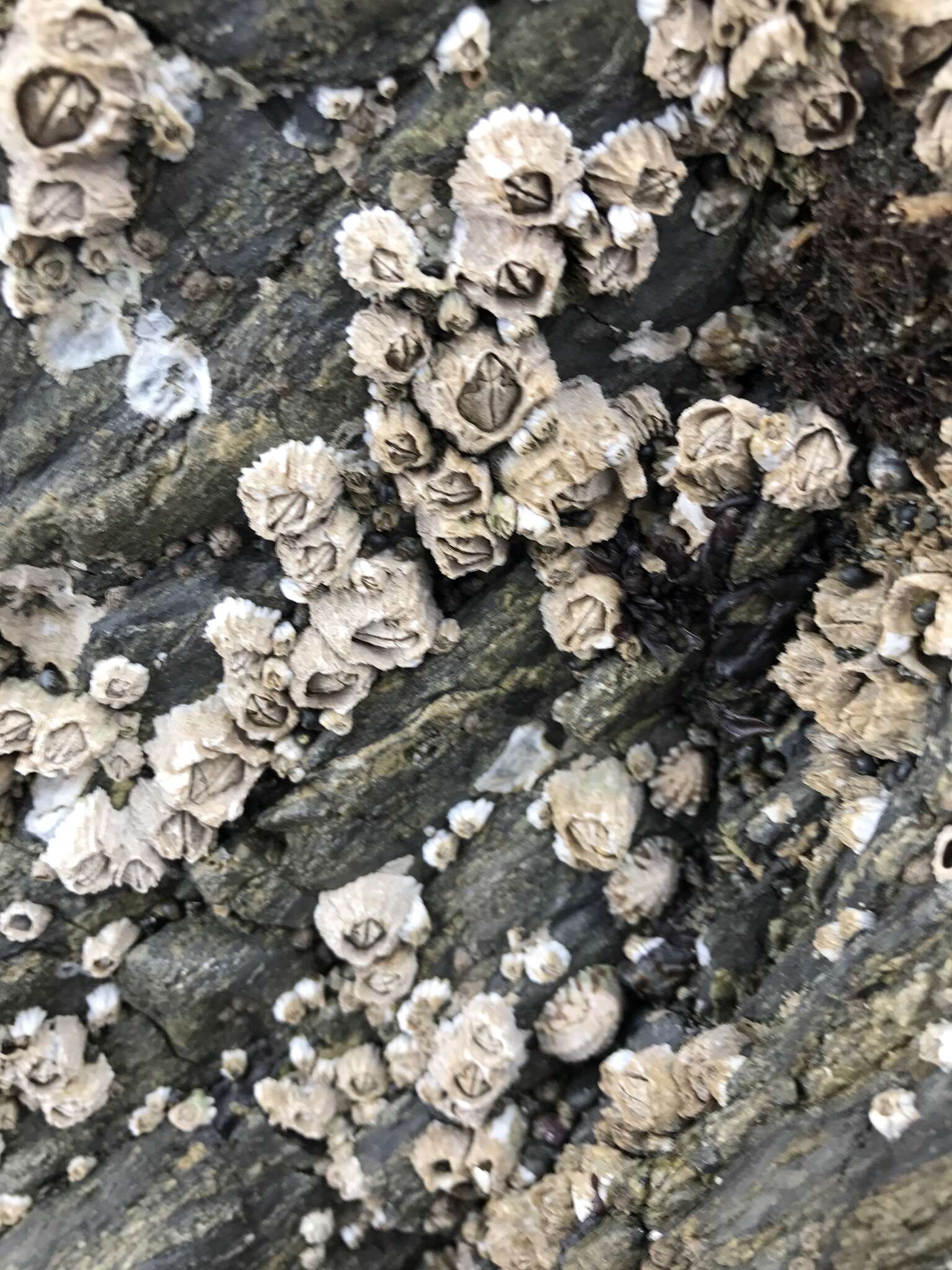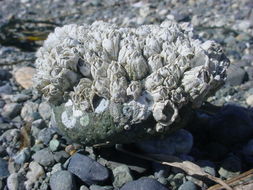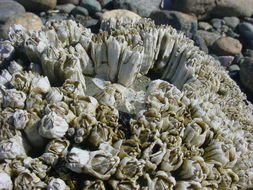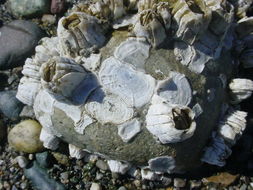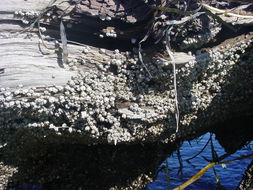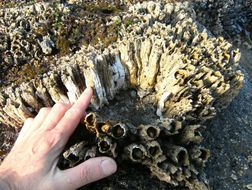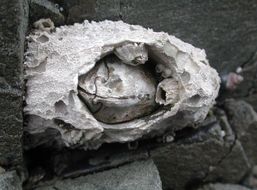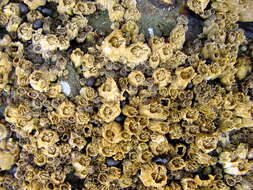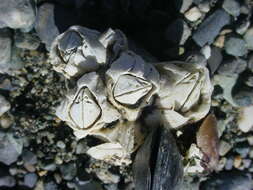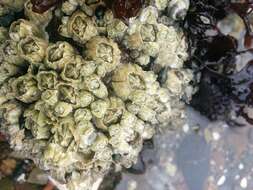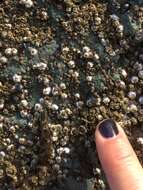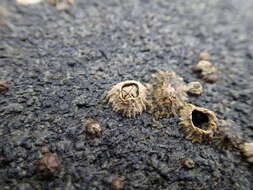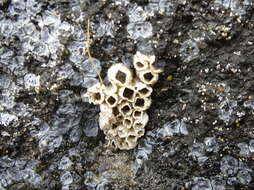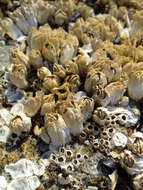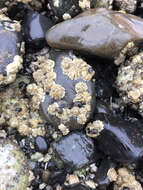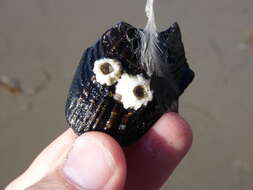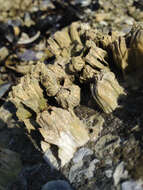-
This group is clustered on a cobble at Ala Spit. Photo by Dave Cowles, September 2005
-
When individuals become too crowded, as on this rock, they grow in a tall, thin columnar formation. Photo by Dave Cowles, September 2005
-
When individuals are dislodged from the rock they leave a calcified scar behind. Photo by Dave Cowles, September 2005
-
Unlike Chthamalus dalli, Balanus glandula frequently grow on other substrates such as the wood of this stump. Photo by Dave Cowles, September 2005.
-
Balanus glandula is usually white or gray-white, but these individuals growing on a stump are mostly brownish, probably due to overgrowth by diatoms or other algae.
-
These crowded individuals on an intertidal rock at Seal Beach, Oregon, have grown up to 10 cm tall. Photo by Dave Cowles, September 2010
-
This large individual (2.5 to 3 cm long) is unusual in several ways. Most barnacles are roughly as long as wide but this individual is nearly twice as long as wide. Also, there are several young barnacles which have settled on the inside surface of the plates, although the original barnacle is still alive.Photo taken by Dave Cowles, June 2011 in the upper midlittoral at Swirl Rocks between two rock walls.
-
Balanus glandula attached to a cobble at Ala Spit, Whidbey Island. Diameter approximately 1.5-2 cm (Photo by: Dave Cowles, September 2005)
-
Balanus glandula, mixed with the smaller Chthamalus dalli, near Bodega Bay, California (USA).
-
These crowded individuals of Balanus glandula have grown (on an intertidal rock) up to 10 cm tall -- Seal Beach, Oregon (USA)Source:
Balanus glandula Darwin, 1854
-
-
Balanus glandula attached to a cobble at Ala Spit, Whidbey Island, Wasington (USA) - (diameter approximately 1.5-2 cm)Source:
Balanus glandula Darwin, 1854
-
-
-
-
-
-
-
-
-
-
-
-

